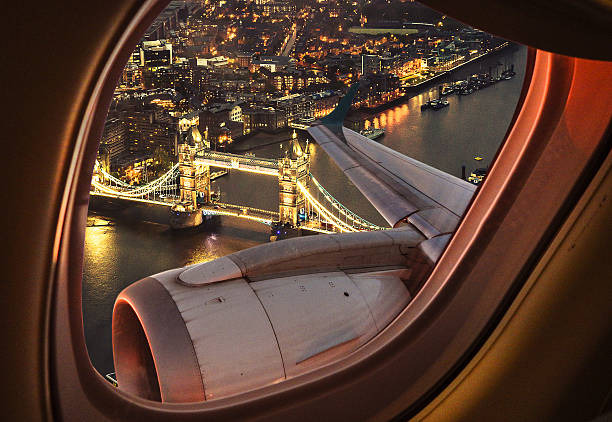Getting to London: Your Comprehensive Guide to Arrival
London, a global hub of culture, commerce, and history, attracts millions of visitors every year. But before you can delve into its vibrant streets and iconic landmarks, you need to get there!
GETTING TO LONDON


Whether you're travelling from across the globe or just across the country, this guide will explore all the different ways to get to London, weighing the pros and cons of each option to help you plan your perfect journey.
By Air: Reaching London's Skies
London boasts six major airports, offering a plethora of international and domestic flights. Choosing the right airport depends on your origin, budget, and final destination within the city.
Heathrow (LHR): The busiest airport in Europe, Heathrow offers the widest range of international flights. It's well-connected to central London via the Heathrow Express (15 minutes), the Elizabeth Line (30 minutes), and the London Underground (Piccadilly Line - around 1 hour). Taxis and buses are also readily available.
Pros: Wide range of destinations, excellent transport links, numerous facilities.
Cons: Can be crowded, potentially higher flight costs.
Gatwick (LGW): South of London, Gatwick serves many European and long-haul destinations, often with budget-friendly options. The Gatwick Express (30 minutes) and regular train services connect it to London Victoria.
Pros: Often cheaper flights, direct trains to central London.
Cons: Can be farther from some destinations in London, potential for delays.
Stansted (STN): Northeast of London, Stansted primarily serves low-cost airlines, making it a popular choice for budget travellers. The Stansted Express (around 50 minutes) runs to London Liverpool Street.
Pros: Budget-friendly flights, good selection of European destinations.
Cons: Located further from central London, Stansted Express can be expensive.
Luton (LTN): Another airport known for budget airlines, located north of London. A shuttle bus connects Luton Airport Parkway station, from where frequent trains run to London St Pancras International (around 30 minutes).
Pros: Often very cheap flights, good for European routes.
Cons: Requires a bus transfer to the train station, can be a longer journey to central London.
London City Airport (LCY): Located in the heart of Docklands, this airport caters mainly to business travellers and offers flights to European destinations. It's easily accessible via the Docklands Light Railway (DLR).
Pros: Convenient location, quick access to Canary Wharf and the City.
Cons: Limited flight options, typically more expensive.
Southend (SEN): Further out but connected by a direct rail line to Liverpool Street, Southend offers a smaller selection of flights but can be convenient depending on your origin.
Pros: Less Crowded, direct Rail Link.
Cons: Smaller selection of flights
By Train: A Comfortable and Scenic Option
Travelling by train is a fantastic way to reach London, especially from within the UK or mainland Europe.
From within the UK: London's major train stations, including King's Cross, Euston, Paddington, Waterloo, and Liverpool Street, connect the city to destinations across the country. Services are frequent and generally comfortable.
Pros: Convenient city centre arrival, comfortable travel, scenic routes.
Cons: Can be expensive, especially during peak times, and potential for delays.
From Europe: The Eurostar offers direct high-speed rail connections from Paris, Brussels, Amsterdam, and other European cities to London St Pancras International.
Pros: Quick and comfortable, avoids airport queues, central arrival.
Cons: Can be expensive, requires booking in advance, and has passport control.
By Bus/Coach: Budget-Friendly Travel
For budget-conscious travellers, buses and coaches offer an affordable way to reach London.
From within the UK: National Express and Megabus operate extensive networks connecting London to towns and cities throughout the country.
Pros: Affordable, frequent services, often with Wi-Fi.
Cons: Can be slow, less comfortable than train travel, potential for traffic delays.
From Europe: Several coach operators, such as Flixbus, Eurolines, and National Express, connect London to destinations across Europe.
Pros: Very budget-friendly, wide range of destinations.
Cons: Long journey times, less comfortable, potential for border delays.
By Car: Flexibility and Freedom (But Not Always Recommended!)
Driving to London can offer flexibility, but navigating the city's traffic and finding parking can be challenging and expensive. Congestion charges apply in central London.
Pros: Flexibility, ability to transport luggage easily.
Cons: Heavy traffic, expensive parking, congestion charges, potential for stress.
Note: Consider using Park & Ride facilities on the outskirts of London and taking public transport into the city centre.
Which option is right for you?
The best way to get to London depends on your circumstances and priorities. Consider the following factors:
Budget: Buses and budget airlines offer the cheapest options.
Time: Flights and high-speed trains are the fastest.
Comfort: Trains generally offer the most comfortable travel experience.
Convenience: Consider the location of your arrival point and how easily you can reach your final destination.
By carefully weighing the pros and cons of each option, you can choose the best way to start your London adventure! Happy travels!
